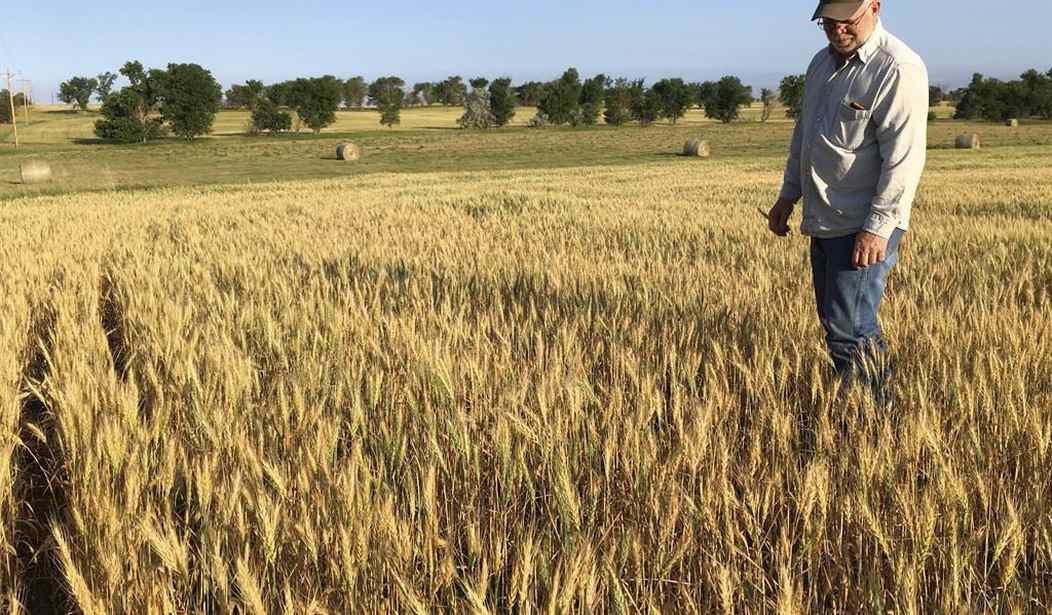Reports from the mainstream media that climate change will lead to food shortages – along with all manner of other calamities – have it exactly backward. The changing climate of the last couple centuries or so is in fact a big reason why the world is fed better than ever.
Warming temperature and elevated levels of atmospheric CO2, as well as improvements in agricultural methods, are supporting a global population of 8 billion compared to fewer than 800,000 prior to the start of the Industrial Revolution.
Promoters of a purported climate apocalypse ignore these inconvenient realities as well as climatic history. A severe cold phase known as the Little Ice Age gripped most of our world during the 16th century before warmth returned.
Historians note that “all things which grew above the ground died and starved,” referring to the death of plant life across the northern hemisphere. Some said it was a cold “that man has not seen before.” Lakes and rivers, which had been previously free of winter ice, froze. Shortened growing seasons, failed harvests and hunger were reported across the world.
The cold eventually gave way to increasing warmth that appeared in the 17th century and continues into our modern era. Until climate madness enveloped many of our leaders, this warm phase was accurately described as a “climate optimum” because of the temperatures conducive to plant growth.
Scientists have attributed recent greening of the Earth to increases in both temperatures and CO2 levels. “From a quarter to half of Earth’s vegetated lands has shown significant greening over the last 35 years largely due to rising levels of atmospheric carbon dioxide,” reports NASA.
Recommended
Carbon dioxide’s fertilization effect on plants is commonly known to greenhouse farmers who use the gas to stimulate growth. While the current atmospheric CO2 levels are around 420 parts per million (ppm), concentrations inside greenhouses are recommended to be between 700 and 1,200 ppm.
Higher CO2 concentrations provide an added benefit of helping plants withstand droughts because openings in leaves, known as stomata, through which CO2 molecules are taken in also allow water molecules to escape. With more CO2 in the air, the stomata need not be open as much, allowing plants to retain more water.
Technology Does Its Part
In addition to a favorable climate, agricultural technology has played its part in enabling a massive leap in crop production. Drip irrigation, soil testing and drone-based monitoring are among many modern technologies in use today. Fertilizers and pesticides – many derived from fossil fuels – are irreplaceable in feeding the world.
Also of critical importance are gene editing technologies that create crops capable of withstanding high temperatures and drought conditions while still producing high yields.
The International Centre for Research in the Dry Areas (ICARDA), for example, has developed a heat-resistant strain of wheat. “Advanced breeding techniques were applied to strains of primitive and modern wheat to develop a set of durum wheat varieties that can not only withstand constant 35 to 40 degree Celsius (95 to 104 degree Fahrenheit) heat, but also grow remarkably fast in only 92 days,” say the researchers.
The most recent genetically modified varieties of rice and potato are able to produce 50 percent more yield. “This is a very exciting technology and could potentially help address problems of poverty and food insecurity at a global scale,” said Michael Kremer, recipient of a Nobel Prize for work on alleviating global poverty.
This means that even a 3-degree Celsius rise in global average temperature by 2100 – a figure projected in the UN’s so-called worst-case scenario – will not inhibit crop production.
All in all, when it comes to food supplies, the world should be thankful for modern warming and the relative abundance of CO2, an elixir for plants, as well as for new crop varieties and agricultural technologies.
Vijay Jayaraj is a Research Associate at the CO2 Coalition, Arlington, Virginia. He holds a master’s degree in environmental sciences from the University of East Anglia, UK and resides in India.

























Join the conversation as a VIP Member